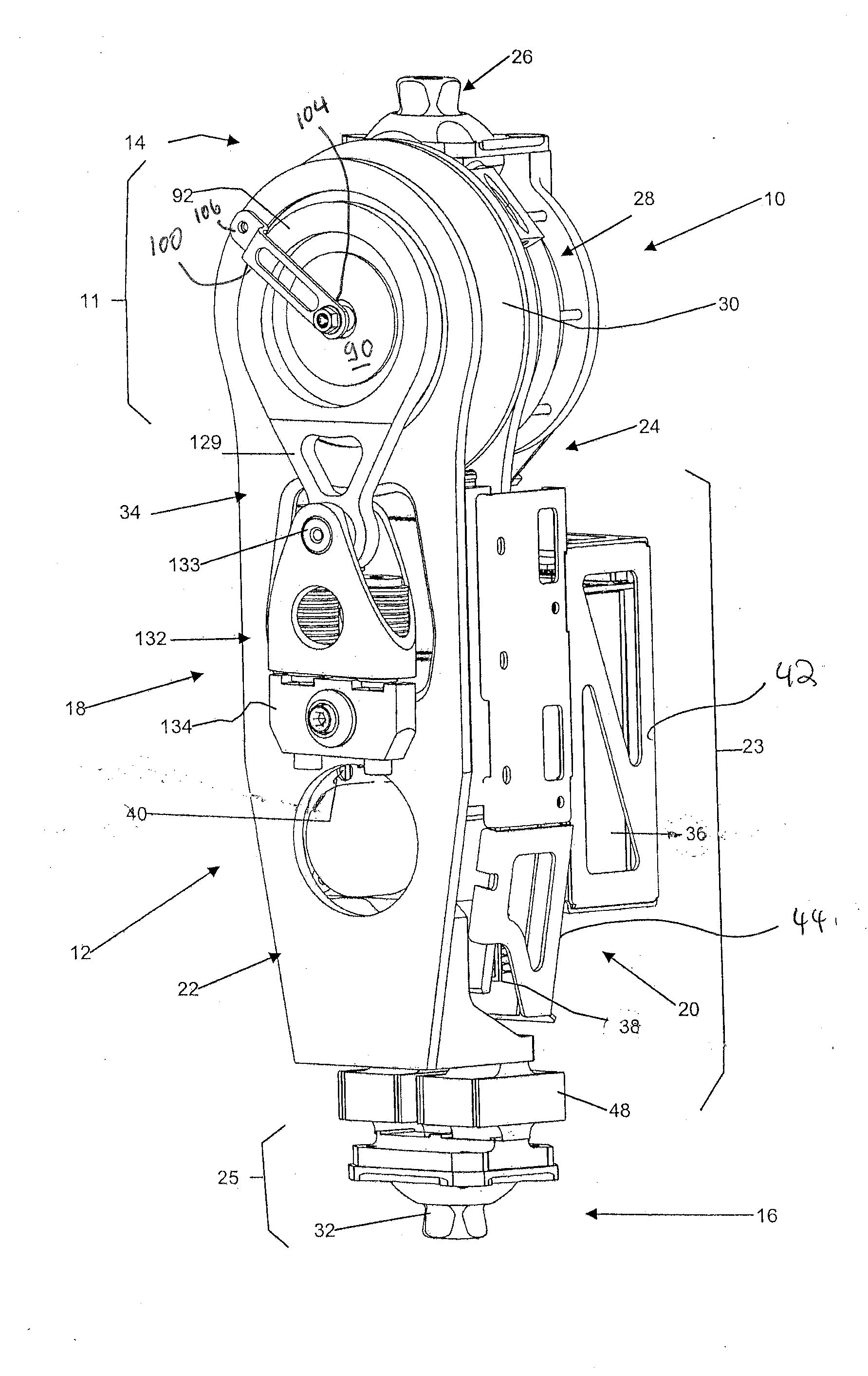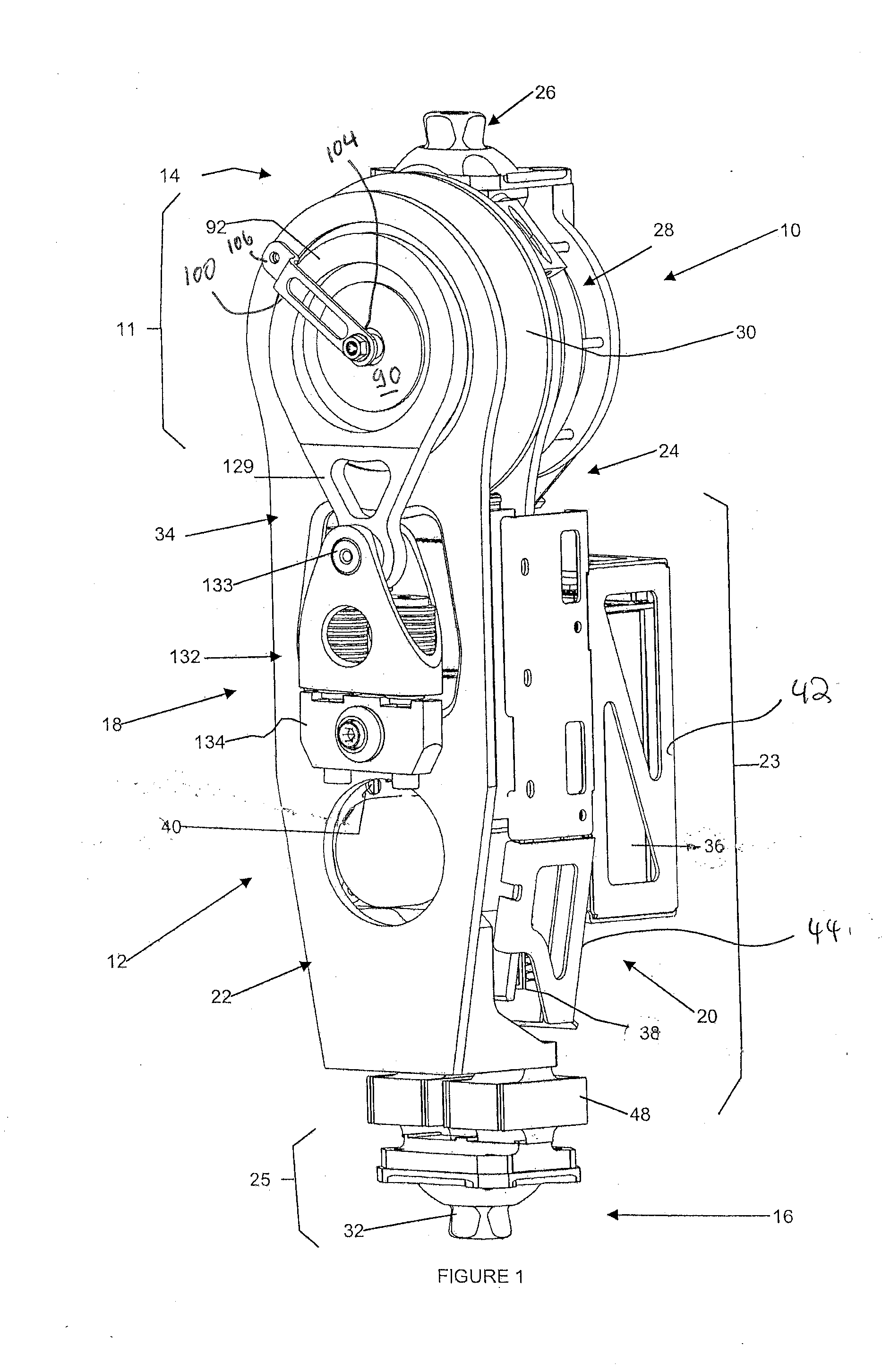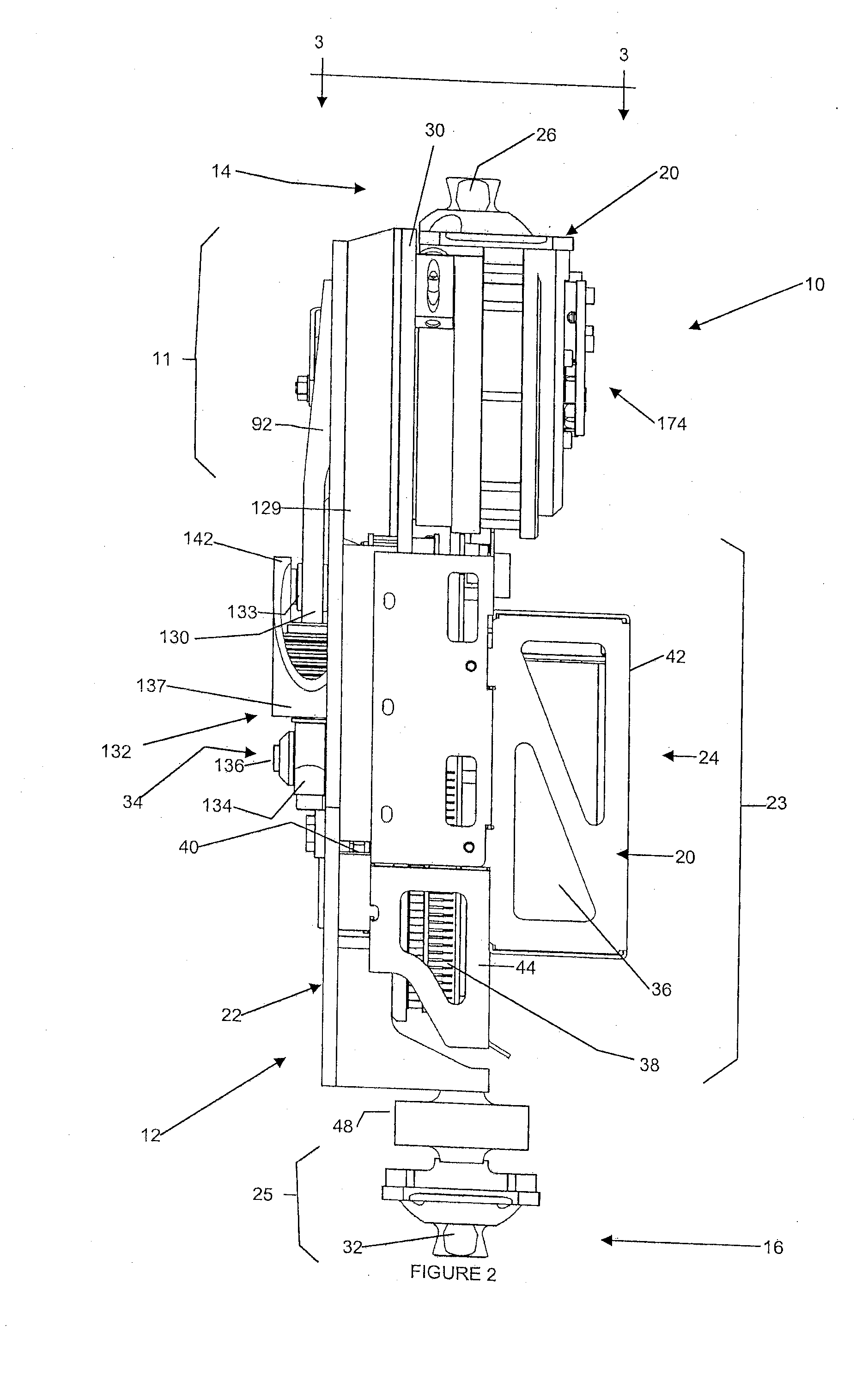Joint Actuation Mechanism for a Prosthetic and/or Orthotic Device Having a Compliant Transmission
a technology orthotic device, which is applied in the field of joint actuation mechanism for prosthetic and/or orthotic device having a compliant transmission, can solve the problems of direct affecting the weight and size of the device, not providing real-time direct measurement, and affecting the weight, so as to reduce the power consumption of the joint actuation mechanism, efficiently return mechanical energy, and reduce the effect of efficiency
- Summary
- Abstract
- Description
- Claims
- Application Information
AI Technical Summary
Benefits of technology
Problems solved by technology
Method used
Image
Examples
Embodiment Construction
[0062]Generally stated, the present invention relates to a prosthetic / orthotic device having at least one device portion (prosthetic or orthotic portion) and joint portion. The joint portion provides for the at least one device portion to pivot between flexion and extension movements relative to another adjacent device portion or an adjacent limb segment (such as a stump) of the user. The device includes a compliant transmission assembly in operational communication with the joint portion. The compliant transmission assembly comprises a compliant member and a pivot interposed between this compliant member and the joint portion. The compliant member absorbs energy during flexion and releases this energy during extension. When absorbing energy, the compliant member dampens flexion and when releasing energy, compliant member assists extension.
[0063]With reference to the appended drawings illustrative embodiments of the present invention will now be described so as to exemplify the inve...
PUM
 Login to View More
Login to View More Abstract
Description
Claims
Application Information
 Login to View More
Login to View More - R&D
- Intellectual Property
- Life Sciences
- Materials
- Tech Scout
- Unparalleled Data Quality
- Higher Quality Content
- 60% Fewer Hallucinations
Browse by: Latest US Patents, China's latest patents, Technical Efficacy Thesaurus, Application Domain, Technology Topic, Popular Technical Reports.
© 2025 PatSnap. All rights reserved.Legal|Privacy policy|Modern Slavery Act Transparency Statement|Sitemap|About US| Contact US: help@patsnap.com



